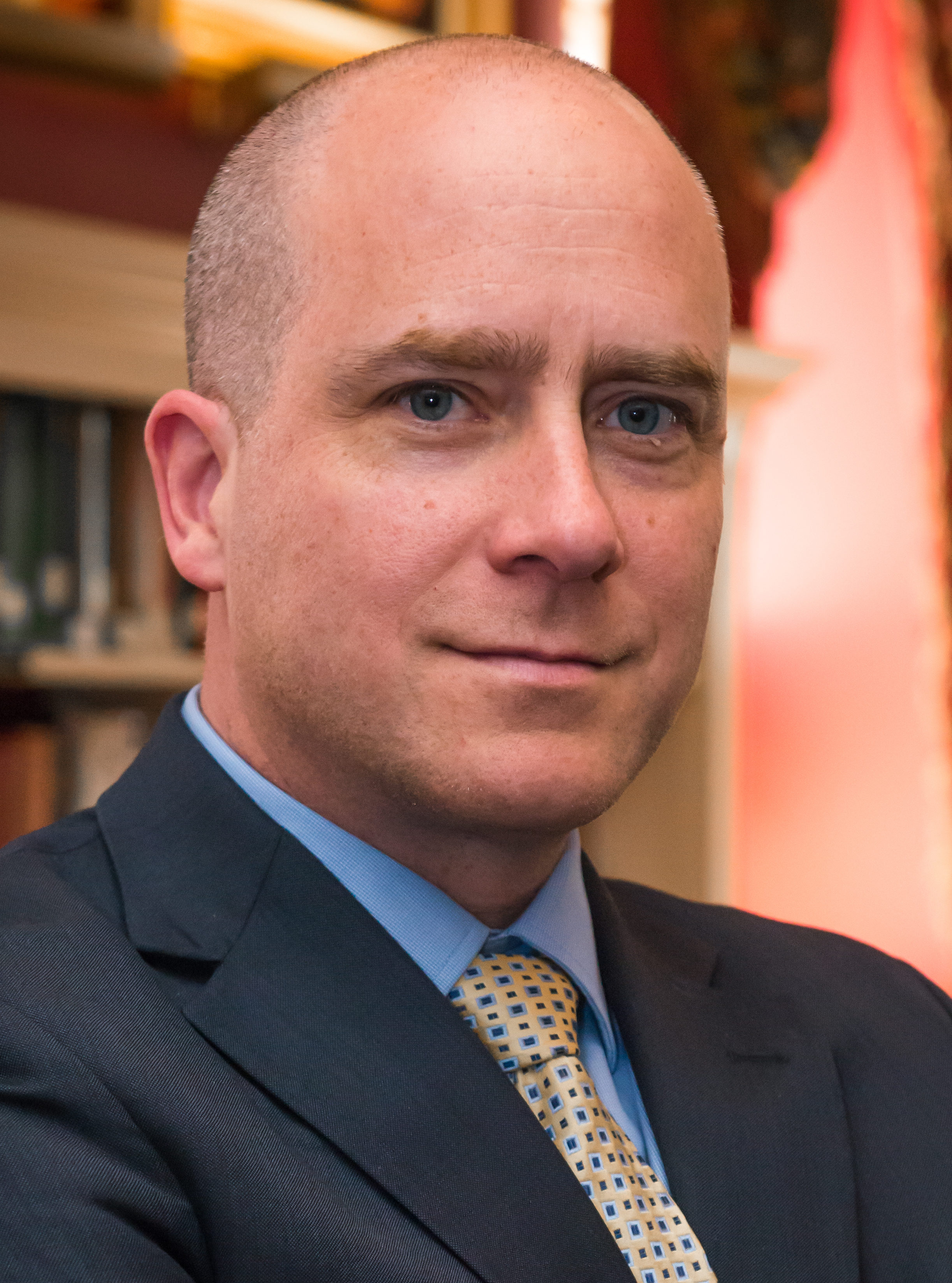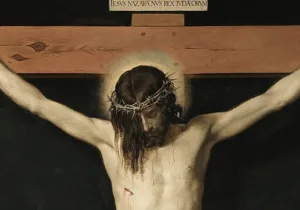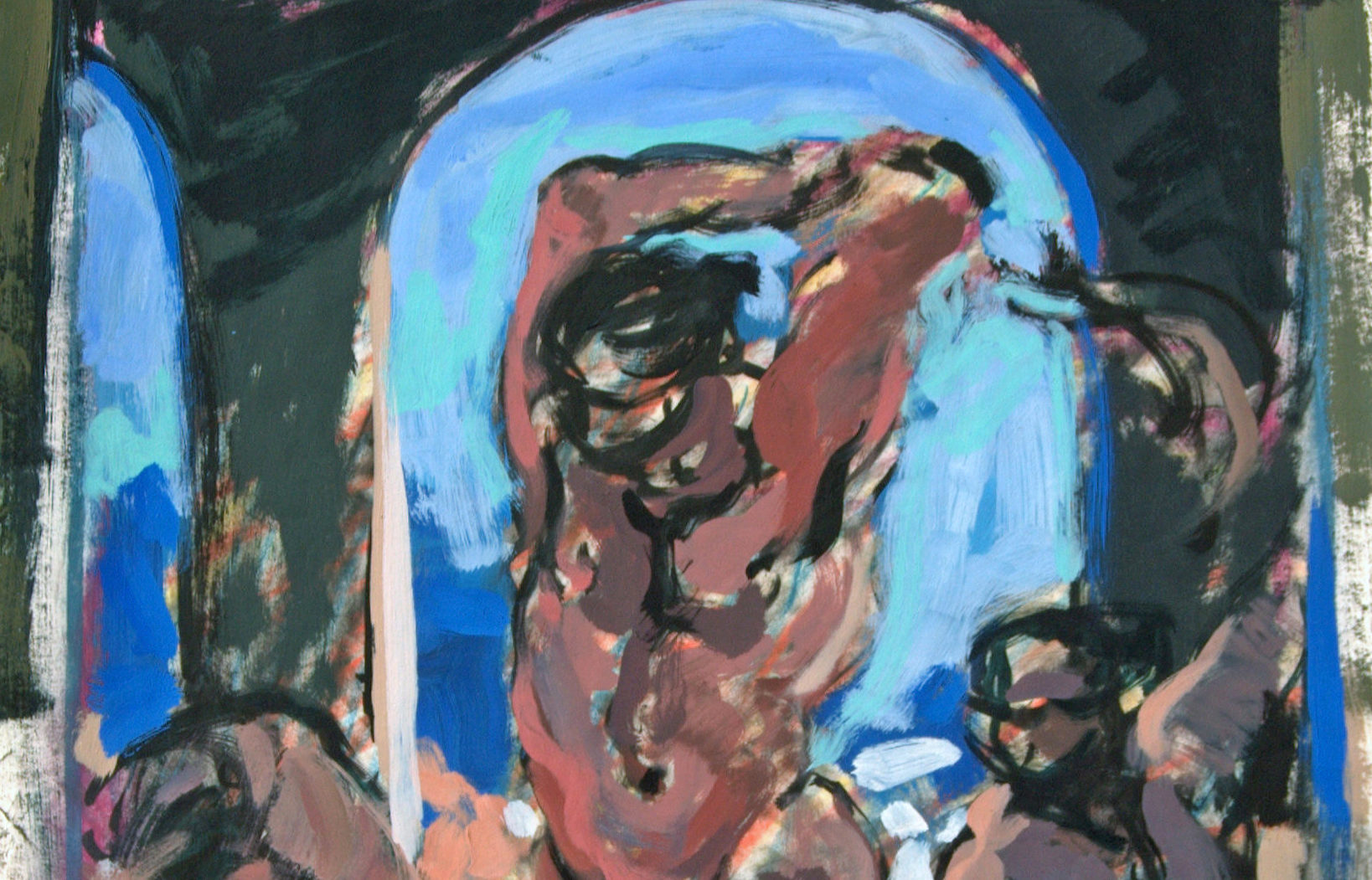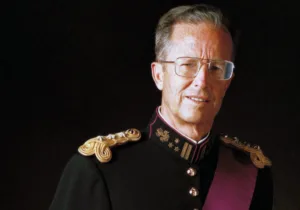Last month marked the seventy-fifth anniversary of the failed bombing intended to assassinate the German Führer Adolf Hitler at his Wolf’s Lair field headquarters in what is now Gierłoż, Poland. The anniversary offers the opportunity to reflect not only on the nature of courage in dark times, but on the character and limits of Christian resistance to political evil.
Comprising of military and political German resisters, the July 20 decapitation strike was the last significant attempt to overthrow the Nazi government from within. But it was not the first. German resistance plots to kill or topple Hitler reached back to at least 1938. That early effort, composing high-ranking officials of the German army and military intelligence and prominent citizens, was abandoned partly—but significantly—due to the failure of the Western powers to oppose Hitler’s aggression toward Czechoslovakia. Had the Munich Conference not ended in appeasement, German resistance could have moved against Hitler under the pretext of preventing a disastrous war. Instead, Chamberlain’s “peace in our time” granted the führer a new lease on life, more literally than was then suspected.
By 1942, alarm over Hitler’s regime had only deepened, and a new conspiratorial group formed under the leadership of then Colonel Henning von Tresckow, a nobleman whose lineage boasted over three hundred years of dedicated military service and more than 20 generals in the family line. Tresckow, partly because of what he saw as the disgrace of the Versailles Treaty, initially felt a heady optimism regarding the prospects of National Socialism. Reality would quickly prove a buzzkill. Hitler’s crimes—including the morally shameful “Night of Long Knives” and Kristallnacht—convinced Tresckow that Nazism was the greater humiliation for the German people and that Hitler was leading the nation toward a moral and military catastrophe. When Tresckow became aware of the massacre of thousands of Jews at Borisov, on the eastern front, a final straw had dropped. Because of—not despite—his devotion to Germany, Tresckow now asserted that “both duty and honor demand that we should do our best to bring about the downfall of Hitler and National Socialism to save Germany and Europe from barbarism.”
Tresckow began to recruit allies, eventually including Lieutenant Colonel Claus von Stauffenberg, scion of one of the oldest and most respected families in southern Germany. His military record was impeccable. He had served as a senior officer in the conquest of Poland in 1939, the invasion of France in 1940, and the campaign against the Soviets in 1941. Following his fight in Russia, Stauffenberg transferred to a panzer division in North Africa where he was gravely injured, losing an eye, his right hand, and two fingers from his left. With his wounds, Stauffenberg could have honorably retired from the military. He insisted, instead, on continuing. His reputation—including within the Nazi hierarchy—skyrocketed. Stauffenberg’s celebrity helped make him an ideal coconspirator, giving cover to his firm conviction, notwithstanding his own early openness to National Socialism, that a loyal German officer could not serve both Germany and Hitler.
In short, the July 20 operation included two primary phases: the assassination was to be followed by a takeover of the German government. The latter phase would be accomplished by implementation of Operation Valkyrie, a long-standing plan providing for the continuity of government in the event of a general breakdown in the civil order of Germany. The conspirators had managed to modify Valkyrie in order to give them—under the pretense of an attempted SS coup—access to the power to arrest key Nazi leadership, disarm the SS, and seize military and administrative control of German cities and command centers in occupied countries.
The phase one assassination attempt was to take place at the Wolf’s Lair, a concrete-reinforced bunker being used for a military conference. Stauffenberg was to place a briefcase containing a timed explosive under the conference table, exit the bunker, and wait for the detonation that would signal the start of phase two.
Everything went wrong from the start.
Just prior to the start of the meeting, Stauffenberg was to briefly steal away in order to arm two explosive charges. However, under tight time constraints, and with his physical handicaps, he only managed to arm one. This ought to have been inconsequential, as the second bomb was meant to be merely redundant. The reinforced nature of the bunker would multiply the blast effect so that a single detonation would kill everyone in the room. Unfortunately, the day’s hot weather prompted the meeting to relocate from the stifling, underground concrete bunker to a cooler, above-ground wooden cabin, with windows. Even then, despite all the dissipating effects of the comparatively flimsy structure, the bomb, having been placed by Stauffenberg under the table in close proximity beneath Hitler, ought to have killed the führer. Misfortune again intervened. It is surmised that after Stauffenberg—having placed the bomb—exited the room, the briefcase was repositioned behind a table leg, inadvertently obstructing Hitler from the bulk of the blast.
The explosion, of course, failed to kill Hitler. He sustained only minor injuries. Nevertheless, the conspirators, both believing that Hitler had been killed as well as knowing they were already fully committed and had nothing else to lose, commenced phase two. But when Hitler, after a very brief recovery, was finally well enough to make telephone calls and give a radio address, phase two was also doomed. It was all over by midnight.
Stauffenberg and several of the key conspirators were executed in the early hours of the next day. Tresckow, informed of the operation’s failure, left his headquarters on the eastern front and detonated a hand grenade under his chin.
In all, over the several following months, some 7,000 people would be arrested on suspicion of involvement in the assassination attempt. More than 4,900 would be executed. Among the victims was Dietrich Bonhoeffer who, while already in custody, had been implicated by Gestapo investigations into the July 20 conspiracy. A month shy of the German surrender, Bonhoeffer would be hanged to death from a meat hook with a noose made of piano wire.
The July 20 plot was the last of 15 known attempts to kill Adolf Hitler. The legacy of those involved in such plots remains the subject of much controversy.
None can reasonably question the conspirator’s courage. Most Germans—if not actively Nazi supporters—were primarily concerned, reasonably enough, with their own survival or the safekeeping of their families. Nazism, like any totalitarian regime, intentionally employed terror to maintain control. Active dissent was dangerous to cultivate, at any level. At various periods, even mentioning the crimes being committed against the Jews could result in imprisonment or death. Listening to foreign radio stations, reading foreign newspapers, criticizing the war or Nazi policy, or spreading rumors unsympathetic to German rulers were equally verboten. Military personnel believed to dissent could find themselves on the eastern front. The July 20 conspirators were fully cognizant of both the risks they faced and to which they exposed their loved ones, as well as their general lack of internal and external support. Their physical grit cannot be gainsaid.
Their moral courage, on the other hand, is often questioned. How much were the conspirators themselves complicit in the Nazis crimes they now so adamantly opposed? Some have called the July 20 plotters every bit as monstrous as any ardent follower of the führer. The charge is not entirely without possible merit. For instance, both Stauffenberg and Tresckow experienced—and were among the operational leadership—of the war on the eastern front. The historical record—including even their own testimony—shows that in addition to having witnessed oppression against the Jewish people and the regime’s political opponents back home, both men were familiar with the atrocities committed by the Einsatzgruppen and other SS units against civilians—especially Jews and partisans—as the German army advanced east. Additionally, and as already mentioned, both Stauffenberg and Tresckow were early supporters of National Socialism. Indeed, for Stauffenberg, an ardent nationalist who never permitted Teutonic glory to stray far from his mind, the same romantic sensibilities that helped turn him against Hitler later on might have been grounded in the same nationalistic ardor that earlier turned him toward the charismatic leader.
Some historians, therefore, make much—if overly simplistically—of the idea that the resistance only began to build in earnest when the defeat of Germany appeared inevitable. Others downplay the conspirators’ religious devotion—whether Stauffenberg’s Catholicism or Tresckow’s Protestantism—suggesting instead that an aristocratic sense of duty to nation played the dominant role. So, which was the primary motivation? Did they resist Hitler in order to protect and vindicate the victims of Nazism, did they want to secure a better surrender for Germany, or did they seek the reclamation of German national honor? At stake is the determination of whether their intentions were moral or merely expedient. I suspect, ultimately, one cannot know with any certainty.
What I do know is that ours is an odd age in which moral purity—or more often its caricature—has become the enemy of the morally good. We demand our heroes be saints—at least in accordance with our own definition of holiness. We oughtn’t. The human soul—I know this by my own example—is a marbled thing, an admixture of noble and disgraceful loves and intentions. Our motives will almost always be mixed. And what of it? Why wouldn’t our intentions—especially in high-stakes moments of great danger—mirror our soul? This isn’t to suggest we ignore the historical record, not demand better, whitewash character, or hesitate to critique the dishonorable. But moral judgments are best done with scalpels, not axes. Precision matters.
For sure, both Stauffenberg and Tresckow were preoccupied with how their move against Hitler corresponded with their religious convictions. They were concerned with whether what they had embarked upon was right. Faith seemed to fuel at least a part of their impetus.
Tresckow, speaking at the confirmation of his sons in 1943, exhorted their commitment to conservative values, including an obligation to truth, internal and external discipline, and the faithful discharge of duties. These standards were at least influenced by, if not grounded in, love and his Protestant confession. In surveying the crimes for which his nation was responsible, Tresckow would insist to a fellow resister:
The German people will be blamed for a guilt the world will not forget in hundreds of years. Not only Hitler, Himmler, Göring, and their comrades will be blamed, but also you and me, your wife and my wife, your children and my children, the old lady entering the shop over there, the man passing on his bicycle, and the little child playing with a ball over there.
This does not sound like a man preoccupied with staving-off a humiliating military defeat in order to salvage Teutonic pride.
For his part, Stauffenberg wrestled with the intersection of his faith and conspiratorial activities. Shortly before the assassination attempt, he questioned whether it was right to sacrifice the salvation of one’s soul even if it might save thousands of lives. He concluded that it was not only permissible but morally imperative. While he believed, to the end, that he was committing high treason, he was convinced, set against such an evil regime, that for any Christian faced with the same dilemma there could only be one choice.
Stauffenberg’s moral reflection in political conflict prompts much reflection on political theological matters. For my part, I myself do not believe that Stauffenberg’s soul was in any peril on account of his move against the führer. Some men ought to die. Whatever tragedy may exist in any death—even of a beast as wicked as Hitler—there are those who have so aligned themselves with malice that their death is really a net gain for humanity. This isn’t a fact to gloat upon, nor to celebrate, but simply to acknowledge and consider when contemplating action.
But while I disagree with Stauffenberg regarding his moral risk, we agree on the importance of taking risks for the security of others. The late political ethicist Jean Bethke Elshtain would have seen in the conspirators’ willingness to risk their lives a confirmation of certain central Christian claims. Human beings, she would say, because they are made in the image of a self-donating, other-centered God, “will not be denuded if he or she gives, or makes a gift of the self, to others. One’s dependence on others is not a diminution but an enrichment of self.” The natural inclination of the self is self-donating, other-centered love.
Such inclinations help lead individuals to form political communities in the first place. Thus, as with any individual, Elshtain observed, so too with kings. While those subordinate within the political community give themselves to the trust and obedience of their ruler, the ruler, in turn, gives themselves to the care of the political community. “The aim of any ruler,” writes Thomas Aquinas, “should be to promote the welfare of the territory that he has been given to rule.” When this aim is enacted, political rule becomes a moral act: the ruler directs the actions of the state so that its people can flourish—that’s to say, so that they can enjoy the conditions necessary to live virtuous lives. At a practical level, this is done by stewarding the powers of public administration, the judicature, and defense toward the maintenance of peace and order through the fostering of conditions necessary for—and the removal of hindrances to—the good life. In this way, political rule can be an act of love. The political expression of such rightly ordered love is civic peace. Such peace, contrary to its thin accounting in popular sentiment, is not merely the absence of war, but the abiding presence of justice and right order.
But human history—exemplified in the Nazi period—has helped make plain that some rulers have no real interest in self-donation. Such people, given over to selfish desires, are happy to prey upon others for their own gain. The political expression of such wrongly ordered love is anarchy or tyranny.
Like Stauffenberg, both Augustine and Thomas Aquinas thought hard about what a Christian ought to do when their political leaders, overawed by their own ambitions, exercise their authority in ruthless, unjust, and malevolent ways. In his essay On Kingship, Thomas describes the conditions of tyranny in terms that would have been familiar to those under Nazism. First, “if a government is under one man who seeks his own benefit and not the good of those subject to him, the ruler is a tyrant … because he uses force to oppress the people instead of justice to rule.” Easily identified, the tyrant is known by his or her abandonment of general standards and indulgence in power expressed through arbitrary whim. The tyrant, Thomas continues:
Despises the common good and seeks his private good and as a result he oppresses his subjects in different ways and which goods will be affected will depend on the various passions to which he is subject. If he is subject to the passion of greed, he steals … If he is dominated by the passion of anger, he sheds blood for nothing … Thus, when the ruler departs from the law there is no security, and everything is uncertain.
But tyrants would not get far if they were opposed early or without accomplice. So, in other terms that would also be familiar to those under Nazism, Augustine cautioned that tyrants are rarely solely to blame for the disintegration of ordered harmony. He insists that the capacity for civic peace is most easily destroyed when tyrants and citizens collude to feed their own ambitions rather than to do what is right. The conditions for social evil are fixed:
If the people applaud those who supply them pleasures rather than those who offer good advice; if no one imposes disagreeable duties, or forbids perverted delights; if kings are interested not in the morality but the docility of their subjects; if provinces are under rulers who are regarded not as directors of conduct but as controllers of material things and providers of material satisfactions, and are treated with servile fear instead of sincere respect.
Stauffenberg’s concern regarding whether his Christian conviction could countenance assassination is appropriate. While we have already seen that a thick conception of peace necessarily includes both justice and order, both Augustine and Thomas knew that anarchy yields miseries worse than does order without justice. In his counsel regarding tyranny, Augustine urged obedience, even at great costs. Great costs, but not all costs. Obedience at the price of defying God’s law must never be permitted. Thomas urged much the same. If the tyranny is not excessive, he urged, it is wiser to tolerate it rather than risk even greater evils. But, again, there are limits. When the tyranny is sufficiently evil, then it must be resisted. Thomas had two prescriptions regarding the dislodging of tyrants that bear importantly on the July 20 conspirators.
First, when the tyrannical evils are sufficiently grave, Thomas reassures us that “there can be sedition without mortal sin.” Moreover, he locates the blame in its proper place: “Indeed, it is the tyrant that is guilty of sedition, since he encourages discord and sedition among his subjects.” This is not semantics. Stauffenberg could rightly take solace in the truth that it was Hitler, and not the resisters, who was to blame for the assassination attempt. The July 20 conspirators were the would-be causal agents of Hitler’s execution. Hitler himself would have been its moral agent.
Lastly, the conspirators—in their plurality—adhered to Thomas’ second prescription. Thomas asserted that the overthrow of a tyrant was too grave a responsibility for a single individual. Instead, such an undertaking should only be pursued by a coalition, ideally composed of wise members of the ruling class. The makeup of the July 20 conspirators, even taking into account mixed motives, was surely as close to a perfect example of Thomas’ directive as any could be.
Neither Augustine nor Aquinas were so sentimental as to imagine that good governance can cure the world of tyrants or lead inexorably to ordered harmony. But neither were they so cynical as to believe genuine human community is impossible. Both understand that evil will not be eliminated in our time, but both insist particular evils can be eliminated and others diminished. The manifestation in human society of certain words: order, concern, community, and wholeness, tend toward the welfare of those within that society; while others: disorder, indifference, solipsism, and atomization, tend toward their annihilation.
In this way, Augustine and Aquinas avoid either of a pair of cousin-errors: limiting any significant social transformation to the eschaton alone or believing that the fullness of shalom can be brought to bear presently on the saeculum—this now-and-not-yet interim of hope and despair between the inauguration of the evangelium—the good news promises of the kingdom of God—and its full and happy fulfillment. In urging political responsibility, sometimes in the face of tyranny, the Christian tradition, at its best, recognizes that the purpose of faith is not merely to believe the good news, but, in a limited sense, to be the good news—a purpose necessarily freighted with concern for justice and lovein the midst of the here-and-now.
Tresckow never really believed the assassination attempt would succeed. But he firmly believed it must be attempted whatever the cost: “Even if it fails, we must take action … Otherwise, this will always be Hitler’s Germany. We have to show the world that not all of us were like him.”
At commemoration services for the July 20 anniversary, German Chancellor Angela Merkle spoke at the location of Stauffenberg’s execution. Against fears that celebrating the heroism of resisters risks whitewashing German history, she spoke candidly of the fact that the resisters were too few. Nevertheless, she rightly acknowledged that, however few, there were those who “acted when others were silent, [who] followed their conscience, [who] took responsibility for their and our nation when others looked away. There were those who faced up to an inhuman system.”
Near to Merkle stood a memorial to the German resistance. It bears the words:
You did not bear the shame.
You resisted.
Marc LiVecche is the executive editor of Providence and the McDonald Visiting Scholar at the McDonald Centre for Theology, Ethics, & Public Life at Christ Church, Oxford University. He—occasionally—tweets at @mlivecche







 Sponsor a student for Christianity & National Security 2024
Sponsor a student for Christianity & National Security 2024